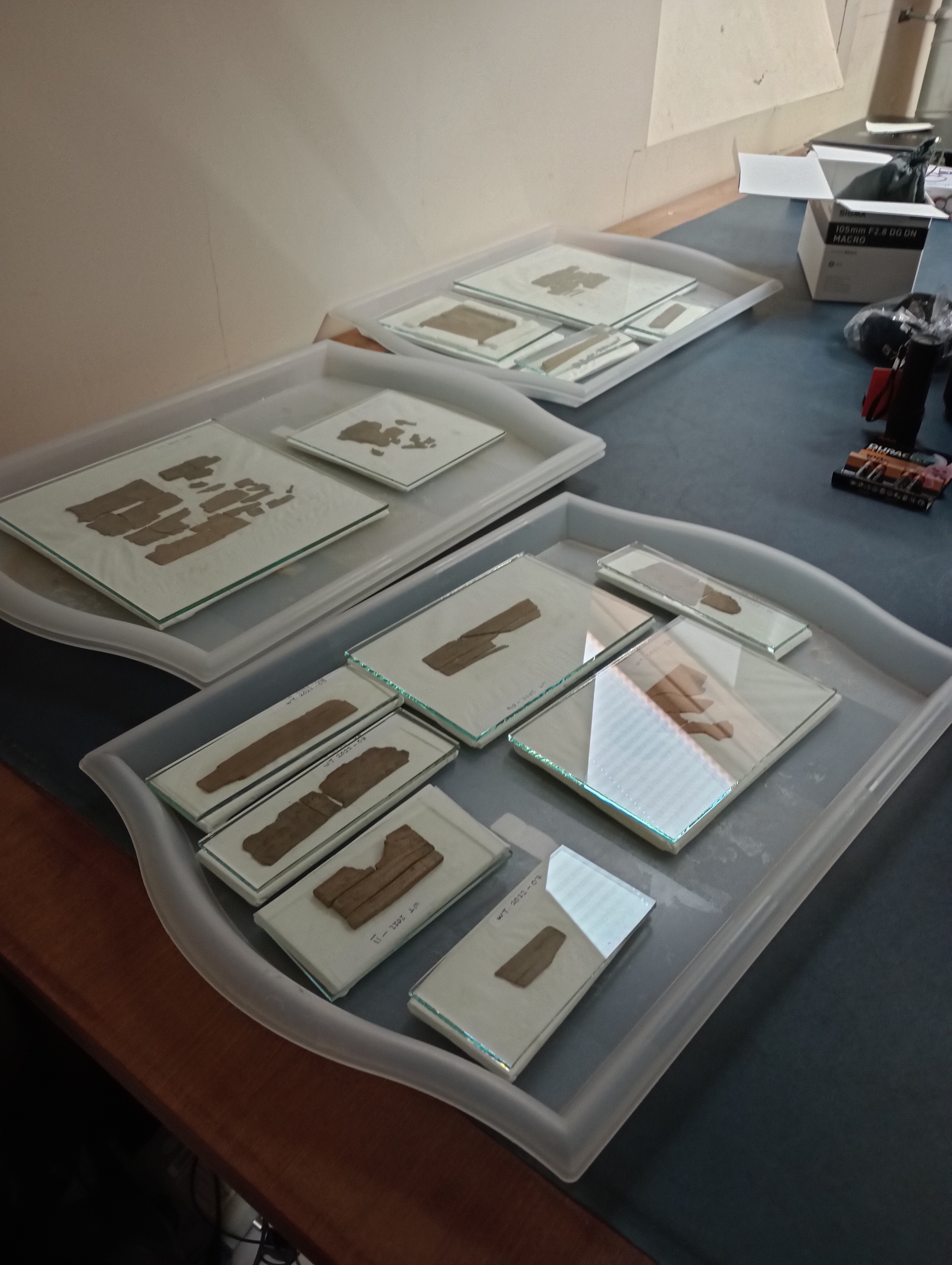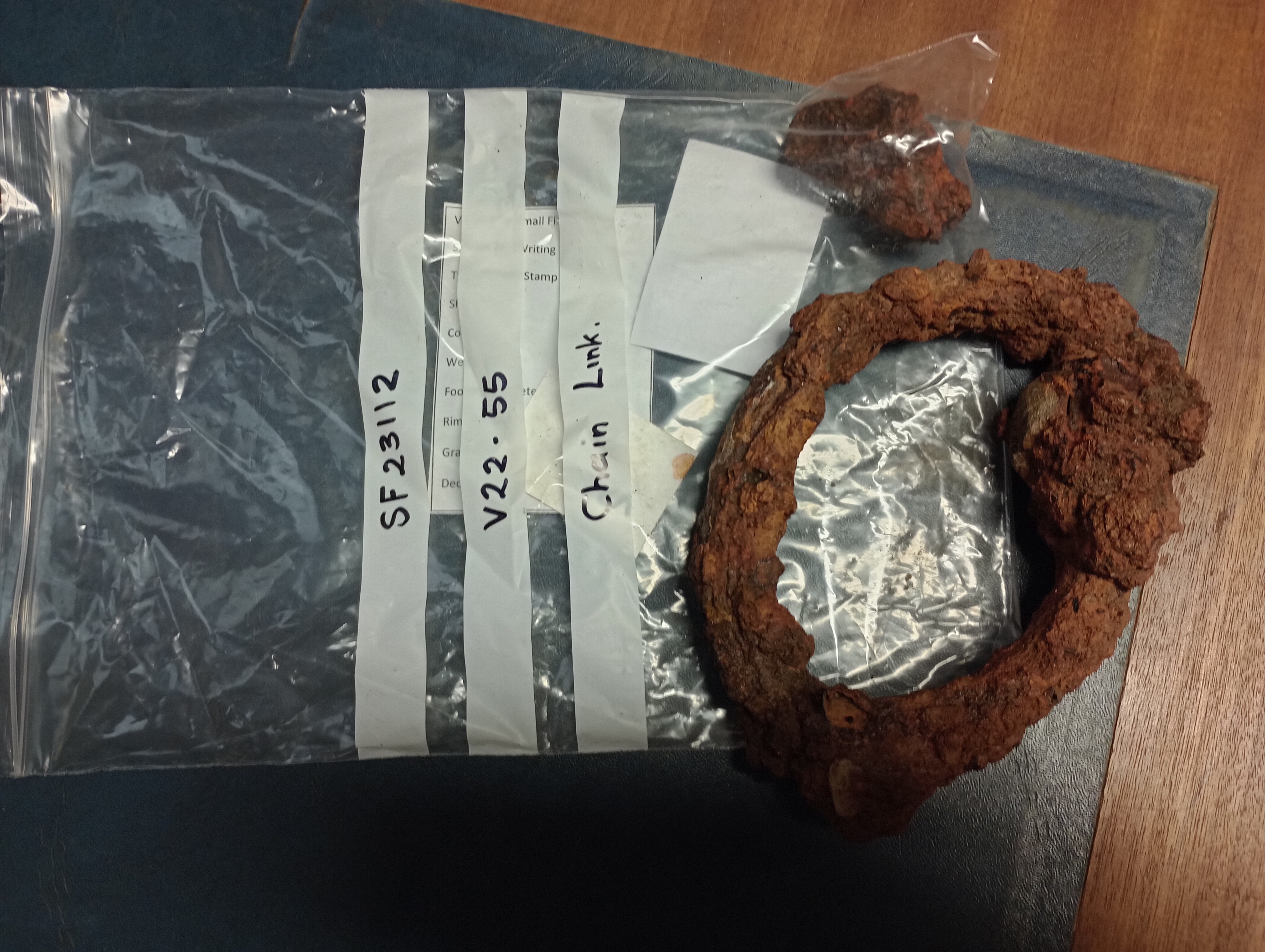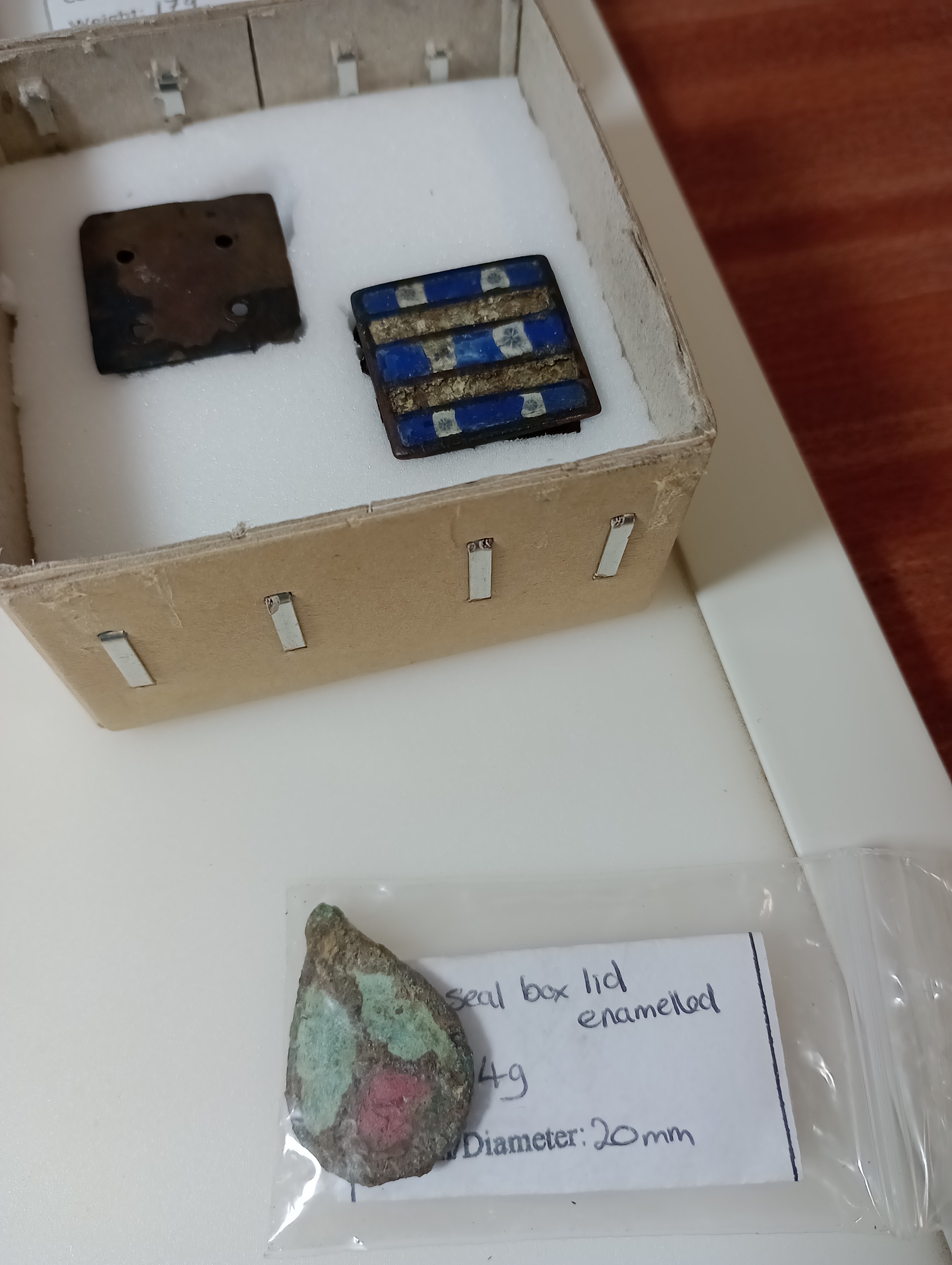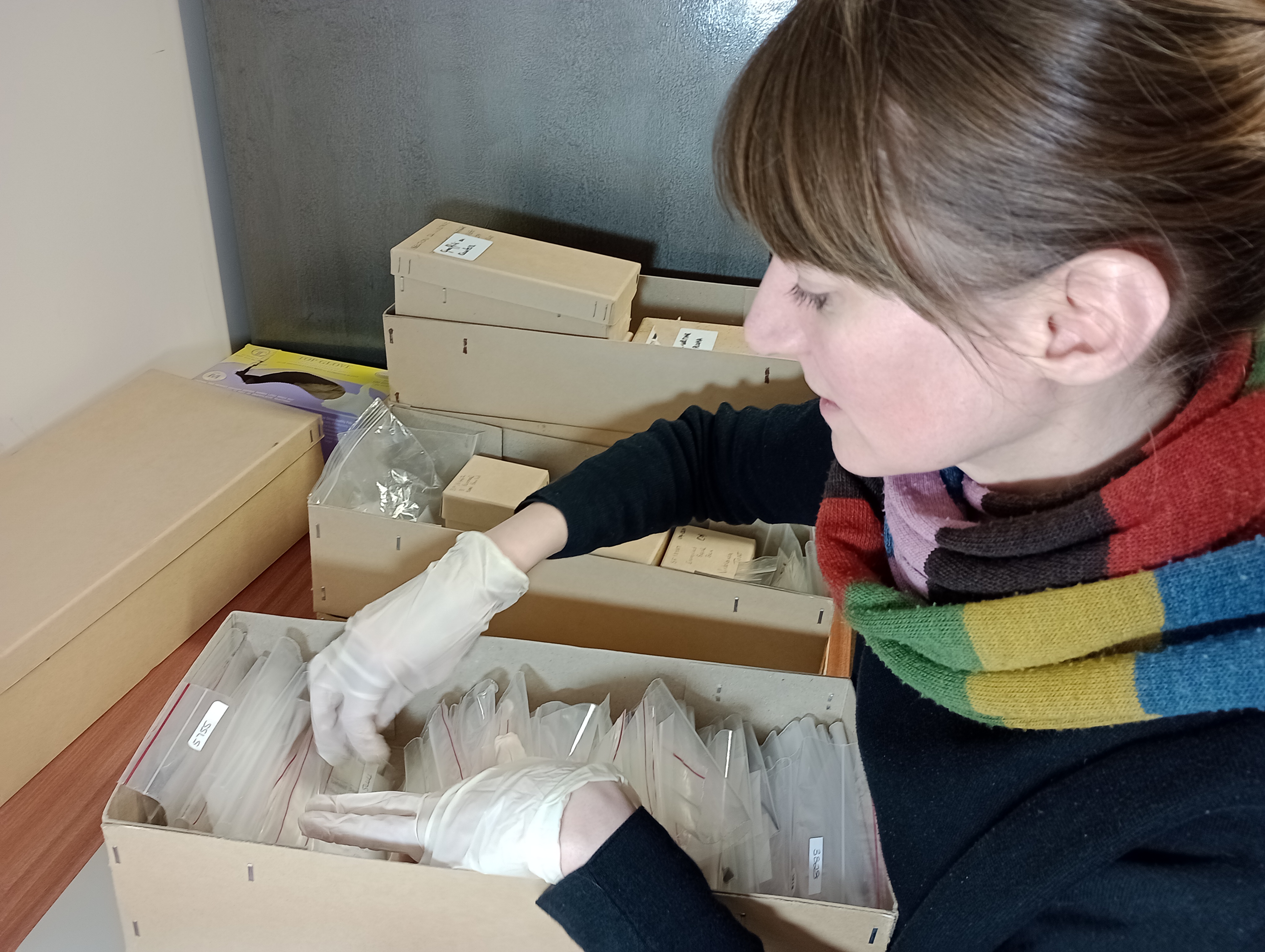By Alex Mullen

I think Vindolanda has to be one of my favourite places. Several things combine in that special part of Northumberland: spectacular countryside, phenomenal archaeology, and wonderful people.


Anna Willi and I were lucky enough to spend the last week at the Roman fort, staying with views of the fort walls from our bedroom windows and just a few metres from the excellent Vindolanda Museum. As always I learnt so much on our visit and saw some fabulous material. Most intriguing were the ancient puffballs which look to the untrained eye like the finds of Roman leather!
We were there primarily for a meeting of the Vindolanda tablets group – a team of around a dozen colleagues which meets twice a year in person and whose raison d’être is to pursue research on the hundreds of precious wooden writing tablets and stylus tablets from the site and to disseminate this knowledge. Our work is never completed of course, because, excitingly, new finds come out of the anaerobic layers of the excavations pretty regularly.

One of the week’s jobs was to assess the recent finds and in particular to take detailed images with a macro-lens of the most promising of the stylus tablets which we think may offer a new type of evidence for slavery at Vindolanda. It’s a grim subject and as part of drawing together material for the article we are preparing we are also studying the evidence of shackles. It was an unsettling experience trying to work out what size of neck might fit. We also explored the site for possible locations for the containment of slaves and/or prisoners.


Anna Willi took on a much more cheery task as she set about assessing the evidence for literacy and related activities at Vindolanda by matching hundreds of styluses, ink-pen nibs, wax spatulae, ink pots and seal boxes (amongst others) to their contexts with our colleague from Canada Alex Meyer (Western University). There’s a lot of work still to be done but it was a huge pleasure for Anna to have boxes of fabulous material on her desk to examine. The most cooed over object was a beautiful seal-box with enamelled flowers, but she really enjoyed finding some tiny styluses too. For more on writing equipment, Anna’s ebook is a great place to start: https://latinnowepubs.github.io/WritingEquipmentVol2/mobile/index.html


I took the opportunity to autopsy an inscribed stone that Alex Meyer, Joonas Vanhala (Turku University, Finland) and I are about to publish in the journal Britannia. Up until last week I’d only seen it via numerous images, scans and drawings. It was good to reassure ourselves that we didn’t need to add anything to our analysis. A blog about the carved stone is available here and it is about to be ‘unveiled’ in the case of new finds in the museum. It’s quite a rude one.
The main event, the meeting of the tablets group itself, was really enjoyable: we agreed on a publication strategy, received updates on the conservation and display of the tablets, found out about the work at the British Museum as part of the Writing History project which is looking at the wood, inks and wax used, and heard about the new excavations at Magna, a fort close to Vindolanda, which begin this summer. We can’t wait to find out whether there are more writing tablets there too – perhaps even with links to Vindolanda!
Huge thanks as always to Andy and Barbara Birley and all the staff at Vindolanda.